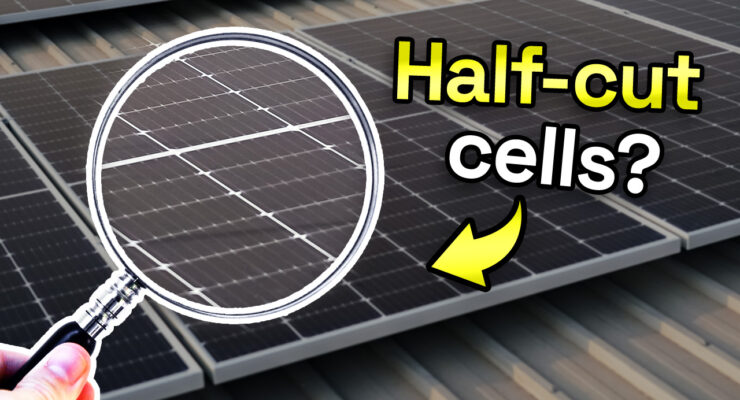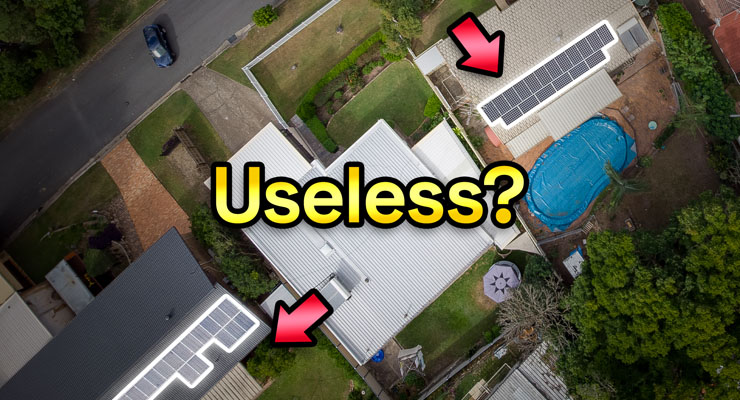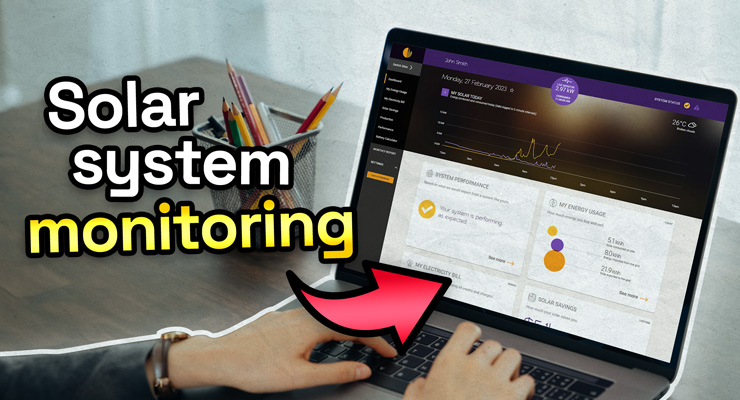Fast read
Half-cut solar panels are traditional silicon solar cells that have been cut in half using a laser cutter. They have been mass-produced since around 2019 and have several benefits for solar cell efficiency and performance.
Half-cut solar panels have reduced resistive losses, improved shading performance, and reduced risk of hotspots compared to traditional solar cells. They also have enhanced temperature coefficients and can use smaller inverters.
These cells are now widely used in solar panels by manufacturers globally and have become a leading technology in the industry.
Half-cut solar panels – is it a leading technology?
Half-cut solar panels were first introduced to the solar industry by REC Solar in 2014, and they quickly transitioned by this company to using half-cut solar cell technology across their range. They are traditional square silicon solar cells chopped in half using a laser cutter.
This innovation was introduced into mass production around 2019 and had several benefits regarding the efficiency and performance of solar panels. As a result, most manufacturers globally manufacture panels with half-cut solar cell technology as a critical feature.
Traditional from around 2010 onward solar panels have 60, 66, or 72 square solar cells connected in series via six columns of 10, 11, or 12 square cells, respectively, as per the image below. The 60-cell models are primarily for residential solar panel systems, and the 66 and 72-cell versions are for commercial systems.
Implementing half-cut cells in solar panels can enhance the energy output of a solar energy system, just as bifacial solar arrays and PERC solar cells improve the performances of silicon solar cells. Half-cut solar cells have several advantages over standard solar cells.
Half-cut is a simple idea going a long way
Lasers play a cool role in making solar panels more efficient. They cut square cells in half, turning them into rectangular cells used in what we call “half-cut solar panels.” These panels are then connected in a row. Now, even though we start with having 60, 66, or 72 cell panels, when we cut them in half, we end up with 120, 132, and 144 half cells, respectively.
Here’s the interesting part: we split the panel into two halves, and each half has 60 half-cells. These halves connect in the middle, kind of like joining puzzle pieces.
By doing this, we combine the power of the top and bottom parts of the panel. This special process allows the half-cut solar panel to have similar power characteristics, like voltage and current, to a regular full-square cell panel.
So, thanks to lasers and a clever splitting strategy, we get more efficiency and power from our solar panels, making them work better for us and the environment.

The benefits
Half-cut solar panels are like superheroes among solar options, even though they use the same space as regular ones. Here’s why they’re cool: First, they’re super efficient because cutting the cells in half reduces energy loss, making them work better. If part of the panel is shaded, no worries – the other half keeps producing power, like having a backup team.
They also stay cool while working, which is great because things usually work better when they’re not too hot. They handle stress well, so they last longer and can deal with different weather conditions without a problem. So, even though they’re the same size, half-cut solar panels are like the rock stars of solar power – efficient, reliable, and ready to shine
How do half-cut solar cells increase panel performance?
Reducing resistive losses
Resistive inefficiencies, or power lost during electrical current transit, represent one form of power loss during the transformation of sunlight into electricity.
By reducing the solar cell’s size by half, the cell’s current reduces by the same proportion (while the voltage remains constant). Moreover, dividing the current in the cell slashes the resistance losses within the cells by up to 75%, enabling the generation of more power in the solar cell, particularly during peak generation periods with high currents.
Furthermore, minimising resistance in the cell generates less heat, thereby improving the solar panel’s performance on hotter days.
Improved shading performance
Traditional solar cells are more susceptible to the effects of shade than half-cut cells.
This attribute is because of the wiring procedures connecting half-cut cells in a solar panel, rather than cutting the cells in half. Standard solar panels with full cells link cells in rows via series wiring. In this setup, shading a single cell within a row and its failure to produce energy will halt the entire section of cells from generating clean energy.
Shade on one unit of one column would remove a third of the solar panel’s power generation, as earlier generation standard solar panels typically have three rows of cells linked together.
Half-cut solar panels link in series, doubling the independent lines compared to full-cut solar panels because of the doubled cell count. In this setup, solar panels with half-cut solar cells can minimise energy loss when shading occurs, as a single shaded cell affects only one-sixth of the total solar panel energy capacity.

Reduced risk of hotspots
By decreasing the current and resistance, the cells generate less heat, so there is a reduced risk of hot spots on solar panels which can accelerate panel degradation and failure. Hot spotting is when a cell becomes so hot that it can melt the backing sheet and eventually cause the front glass to crack because of an extremely hot small area on the solar panel compared to the surrounding areas.
Increased durability
Half-cut solar panels are more structurally resilient than their full-cell predecessors, owing to their smaller size, making them more resistant to shattering. When applied to a panel, the panel structure’s flexibility increases by halving the cell’s size, reducing the risk of cell cracks and cell fractures forming.
Saving raw materials and therefore reducing costs
In the manufacturing process of cells, the total square cells can often develop a blemish or a small crack on the corner. Microcracks in cells, accounting for a maximum of 3% of production, resulted in discarding or cutting such cells into smaller segments for cheaper camping panels, etc.
When utilising half-cut solar panel technology, it’s possible to halve a square cell with a small missing corner. Enabling the use of 50% of the cell in solar module manufacturing.
As a result, solar systems with half-cut solar panels can provide faster solar payback times for owners.



